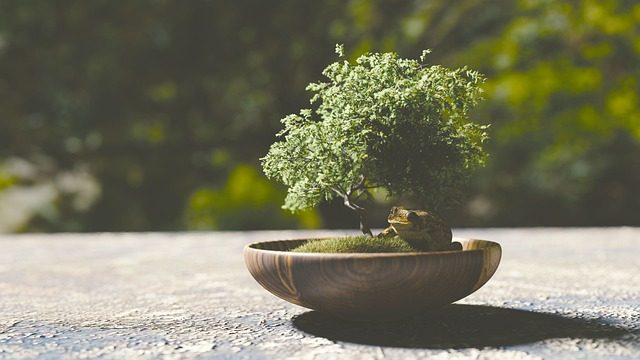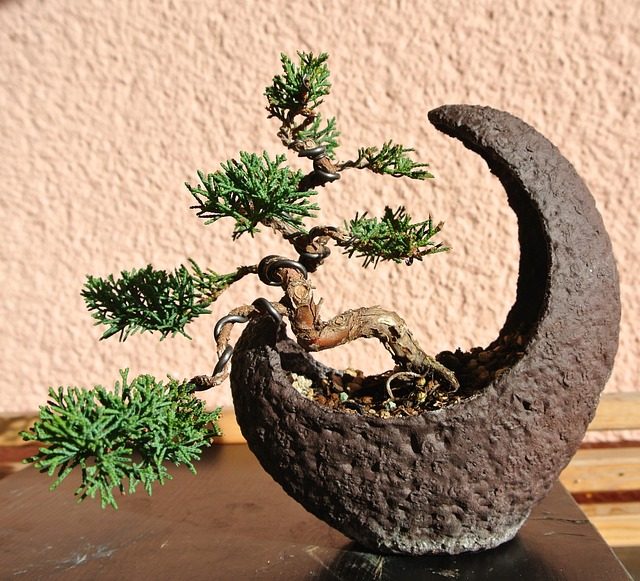BLOGS
Bonsai Trees For Your Luxury Home
Bonsai trees are a great way to bring life and beauty into any living space. A lot of bonsai trees are often used as decoration in luxury homes, providing a unique statement and adding an element of sophistication. Bonsai trees come in many shapes, sizes, and varieties, each with its own unique characteristics that will enhance the look of any room.
Many kinds of bonsai trees can be used in your luxury home, from flowering to traditional evergreen varieties. This article will discuss the different types of bonsai trees available and how you can use them to enhance your living space. So, if you are looking for a stylish addition to your house and lot in Daang Hari, read on and discover the art of bonsai trees for your luxury home.
What is the Most Popular Type of Bonsai Tree?
The most popular type of bonsai tree is a Ficus, also known as the ‘Banyan Fig.’ This type of tree is native to India and South East Asia and has been shaped into an art form for centuries. It is one of the oldest types of bonsai trees in existence today, and its popularity stems from its ability to survive and thrive in various conditions.
Ficus bonsai trees are easy to take care of and can live up to two hundred years with proper care. The leaves can be easily trimmed so that they are small enough to fit into even the smallest pots or containers while still being able to grow large. Furthermore, unlike many other types of bonsai, Ficus trees do not require frequent repotting as they can easily survive in the same container for many years.
Ficus bonsai trees are also visually striking and come in various colors and shapes. The leaves range from dark green to yellow or even orange, depending on the species of tree you choose. Additionally, several varieties feature unique foliage patterns, such as heart-shaped leaves or those with intricate veins running through them. This makes Ficus bonsais perfect for decorative purposes and will give any room a luxurious touch.

What Type of Bonsai is Best for Indoors?
The bonsai types for indoors depend largely on the environment they are kept in. Generally, tropical or sub-tropical trees such as Ficus, Fukien Tea, Chinese Elm, and Jasmine will thrive indoors. These varieties need warm temperatures, high humidity levels, and plenty of light to survive. On the other hand, temperate species like Juniper, Pine, and Maple can be grown indoors but may require more effort and care than their tropical counterparts.
When growing bonsai indoors in your house and lot in Daang Hari, it is important to consider both illumination level (bright indirect sunlight) and temperature range (generally between 65–85°F). The amount of natural light available should determine what kind of tree you get; the less natural light, the more shade-tolerant your tree should be. Opt for varieties like Podocarpus, Ficus Benjamina, or Schefflera Arbicola, as they do well in low light conditions.
When it comes to humidity, tropical species need high levels, so misting should be done several times a week to keep them healthy and hydrated. You can also use a humidifier or set up a shallow tray of water near the plant to help increase the moisture content in the air. On the other hand, temperate bonsai don’t require as much humidity but still benefit from regular misting.
Which Bonsai is Best for Beginners?
When it comes to bonsai, one of the most common questions asked by beginners is which species are best for them to start with. The answer to this question depends on a few factors such as the experience level of the person, their location, and what kind of look they want.
For those who are just starting out in bonsai, some of the easier plants to care for include juniper, ficus, Chinese elm, and Japanese maple. Juniper is hardy and can handle a variety of climates while still developing into attractive specimens over time.
Ficus is great for beginners because it can tolerate lower light levels than many other species. The Chinese elm is another popular choice because it has an attractive form, great bonsai potential, and is also relatively easy to care for. Finally, the Japanese maple is well suited to beginners because of its attractive foliage and ease of pruning.
Other trees that can be considered include azaleas, boxwood, and even some conifers such as pines or spruces. Azaleas are popular due to their colorful flowers during the blooming season and their smaller size. Boxwood is another good choice for beginners because it grows slowly, making it easier to manage. And finally, conifers like pines or spruces can make lovely bonsai specimens with some patience and skill on the grower’s part.
How Many Types of Bonsai Are There?
Generally, there are three main types of bonsai trees. The most popular type is the ‘Shohin’ or mini bonsai, which usually grows up to 8 inches in height and 6 inches in width. Other types include the ‘Mame’ (1-4 inch height) and the ‘Chuhin’ (4-10 inch height).
Each type has its own unique characteristics and requires different levels of care. The Shohin is considered a great entry-level option for those new to gardening with these miniature plants, as they require less pruning and maintenance than wider varieties. They are perfect for small spaces, such as home offices or windowsills, where you can admire their delicate beauty.
The Mame variety can be challenging but rewarding for experienced gardeners as they need to be trained and pruned with great care to keep their shape. This type of bonsai is usually kept between 1-4 inches in height, although it can grow slightly larger if not properly cared for.
Finally, the Chuhin type is perfect for intermediate gardeners as they are easy to train but also require more attention due to their larger size. They generally grow up to 10 inches in height, so they look impressive when placed outdoors in the sun or near a window indoors. These trees must receive plenty of light and space to thrive, much like any other plant.

4 Tips for Decorating Your Home with Bonsai Trees
Consider the Shape of Your Plant
When adding a bonsai tree to your house and lot in Daang Hari, consider the plant’s overall shape. Many plants are trained in different shapes and styles, such as upright (chokkan), slanted (moyogi), or cascade (kengai). Each style will create a unique look that draws attention and adds visual appeal to any room. When selecting the right style for your home, think about where you plan to place the tree and how it will complement the existing decor.
Choose Your Pot Wisely
The pot is important when displaying a bonsai tree in your home in Forresta. Because these trees are grown in miniature pots compared to normal-size plants, the container itself becomes part of the visual aesthetic. Consider a pot based on its shape, color, texture, and size. Various materials are available such as ceramic, glazed or unglazed clay, plastic, or lacquer. The selection of pots will depend on your style preference and budget.
Give Trees Room to Breathe
When it comes to bonsai trees, less is more. A plant to thrive in an indoor environment in your home in Forresta, it needs plenty of air circulation and light exposure. Place the tree away from direct sunlight but still ensure that it gets enough natural light throughout the day. You can do this by placing it near a window or other indirect lighting source. Give each tree ample space so all the branches can be seen, and allow for some breathing room between each tree.
Add Accessories to Enhance the Look
Bonsai trees look beautiful by themselves, but you can further enhance their look with a few accessories. Consider adding a figurine near your plants or a small stone lantern that will contrast nicely against the foliage. If you have multiple bonsais arranged in one area, add an accent piece, such as a water feature or fountain, to make it stand out. These additions can bring life and movement to any room while adding texture and character to the overall design.
Final Thoughts
Bonsai trees are a unique way to add life and charm to any luxury home, even in your house and lot in Daang Hari. From flowering varieties to traditional evergreen species, there is a bonsai tree for every taste and style preference. Consider the shape of your plant, choose your pot wisely, give it room to breathe, and don’t forget to add accessories to enhance its look. With the proper care and attention, you can create a stunning feature that will bring life and serenity to your luxury home.
Suggested Read: Condo Gardening: 10 Household Items To Get You Started
Suggested Read: Best Garden Stores In Santa Rosa Laguna
Suggested Read: How Do Trees Add Luxury To A Property
Suggested Read: Dining Room Trends Of 2022
Suggested Read: 5 Must-Read Investment Books














